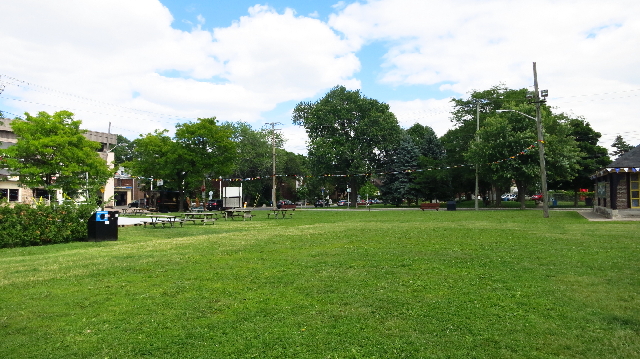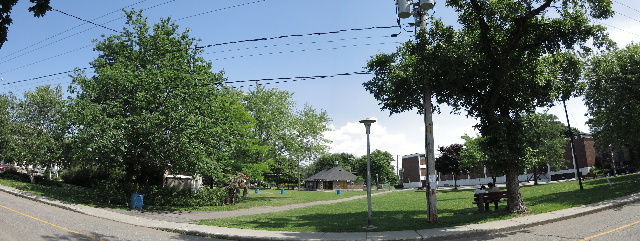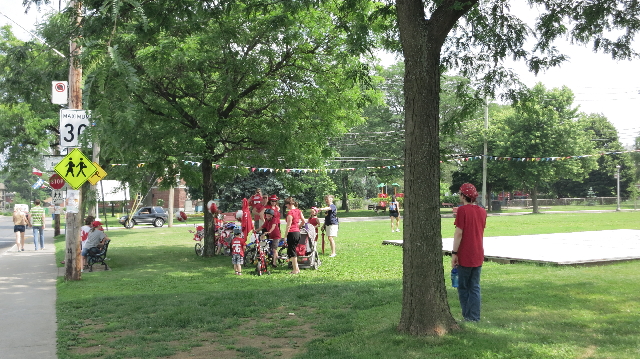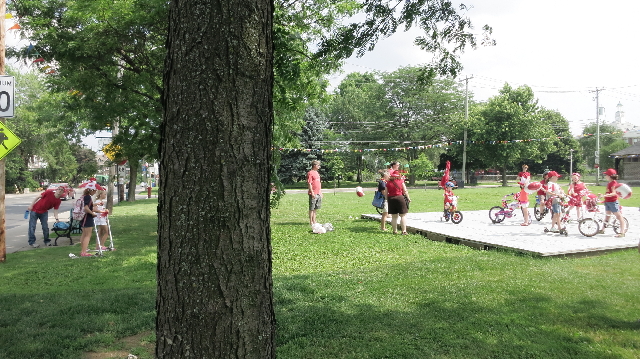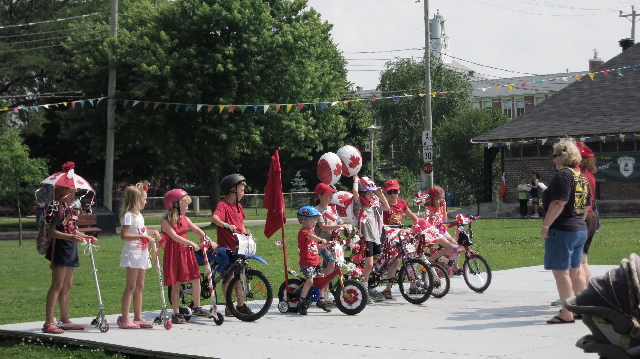Mutuality and the notion of Commons.
I have mentioned in the lead article of this URBAN FIELD NOTES series that whereas Urban Commons as place may sometimes be identified by name, they will always be possessed of a certain spirit characterized by a sense of shared group ownership, use, and identity that translates in mutual responsibility for security and maintenance, mutual respect for privacy and mutual commitment to rituality.
To my understanding the following one liner by an American large city mayor, captures best the essential and necessary social-spatial mutuality that characterizes the Commons as places and situations in the city:
“What we hold together holds us together”
Dixit a Mayor of Helena, Montana, as published long ago in Places: a Forum of environmental design. (Quoted from memory)
The suggestive emptiness of the Commons as place, compared to the structured setting of a park.
Conventionally, a portion of the public domain reserved for symbolic or civic activities, referred to as a Town Green, will best embody the spirit of the Commons.
Sometimes confused with a City Park, a brief comparison, in terms of the founding mutuality, should illustrate the specificity of each.
Essentially, a City Park is equipped for recreational activities, usually for different age groups, thereby transforming space into a prepared setting cueing activities and behavioral expectations.
In this highly articulated neighborhood park of central Montreal, for example, we find: a shaded picnic area, a children play areas and wading pool, a service building, a basketball court and a large football and soccer pitch combo and, finally, a small wooded area for more quiet walks with a street facing memorial to a hero martyr of the Filipina independence movement whose birthday is celebrated annually, in great pomp, by the Filipina community established in the neighborhood.
That yearly ritual plus the spontaneous use of the picnic area by the Filipina community during the summer and fall months, as shown below, give to this park, or at least in parts of it, a sense of exclusive social and cultural identification one does not expect usually from a Commons.
Yet, It is as if within the larger context of the public park a cultural community had carved out its own “commons” of sort, in space (the picnic and memorial areas) and in time (the summer rituals).
Essentially a Town Green, as the one we located in the suburban Montreal West municipality, possesses an emptiness issued from a paring down of equipment to bare necessities elaborated over the years for maximum flexibility of use: lighting, benches, and a paved access path that crosses its lush lawn diagonally…even garbage cans will show up only with activities.
The path loosely delimits an organized activity area tied to the Community Centre and service building: (picnic tables, dance floor, decorating flag line, etc.) as shown below.
Let us note here that the municipality is not short of standard park equipment as, across the street bordering that part of the Green, lays a kiddies park with its full implement of brightly coloured play equipment that can be barely seen behind the street lining double row of mature trees.
The above mentioned path will, just as loosely, delimit a spontaneous activity and/or big muscle area which gets most of its use by the students of a nearby Private Secondary Education institution, as shown below.
A curious aspect of this path is the way it extends into something like its own a crosswalk across the bordering street, at the same angle the path crosses the Green; this eases the flow of student traffic and helps guide it within secure markers vis-à-vis car traffic.
Without wishing to read too much in this particularity I think it bears the mark of one of those adaptive strategies, that make for live places, to ease the student pattern of movement from their school to the Green and beyond, to the local suburban train station and the Town Main Street with its eateries etc.
In return I can bear witness to the civic self-control exerted by the users of the Green and to the absence of directives for the use of the Green, but for one lone understandable invitation of the walkers of leash less dogs to bag their dog poop.
I see these physical and behavioral aspects of the Town Green as so many symptoms of that mutuality of responsibility for security and maintenance I identified as characteristic of the Commons.
The necessary Commoners: activity in the Commons
These people, above, are not shepherds bringing their sheep to graze, as in the original rural Commons of England, but parents bringing their brood to participate in a Canada Day “Decorated Bike” contest.
They soon will congregate nearer to the dance and performing platform as parents and passers by sense the event taking shape, as shown below.
The event begins with a dancing-parade, for lack of better expression, of bikes that feels a bit like the initial round of exercises on ice by athletes prior to a hockey game (an all pervasive cultural model), as shown below.
Eventually, the bikes and their riders having been closely examined by the local cub troop scoutmasters, a series of awards will be distributed to the lined up children, proudly applauded by parents and friends, as shown below.
Discussion
City Parks have sometimes an artificial amusement and recreation place look to them as people come, “recreate”, then go leaving their leftovers behind.
Town Greens have a natural gathering place feel to them as equipment and activity are brought by the users who come then go, leaving behind, quite differently from the park, nothing but a memory and a Green empty slate as prompts for further use.
Whereas both Park and Green are, in a way, “being held” by the citizenry, Town Greens allow for the “being-held” to be renewed and reinterpreted afresh by the users in Commons fashion i.e. in mutual responsibility for security, respect for privacy and commitment to rituality.
I cannot claim with certainty that the small physical and social scale of a suburban Town, alone, can explain the development of this mutuality…it intuitively makes a lot of sense though when one thinks of the classic anonymity that pervades the social fabric of a large city.
In support of that intuition, in the case of the suburban municipality of Montreal West, it should be mentioned that the Town Green is in close physical and organizational proximity to City Hall, the Community Centre, the Curling Rink, the Montreal West Academy, the local suburban train station and Main Street!
Credit photos Maurice Amiel


